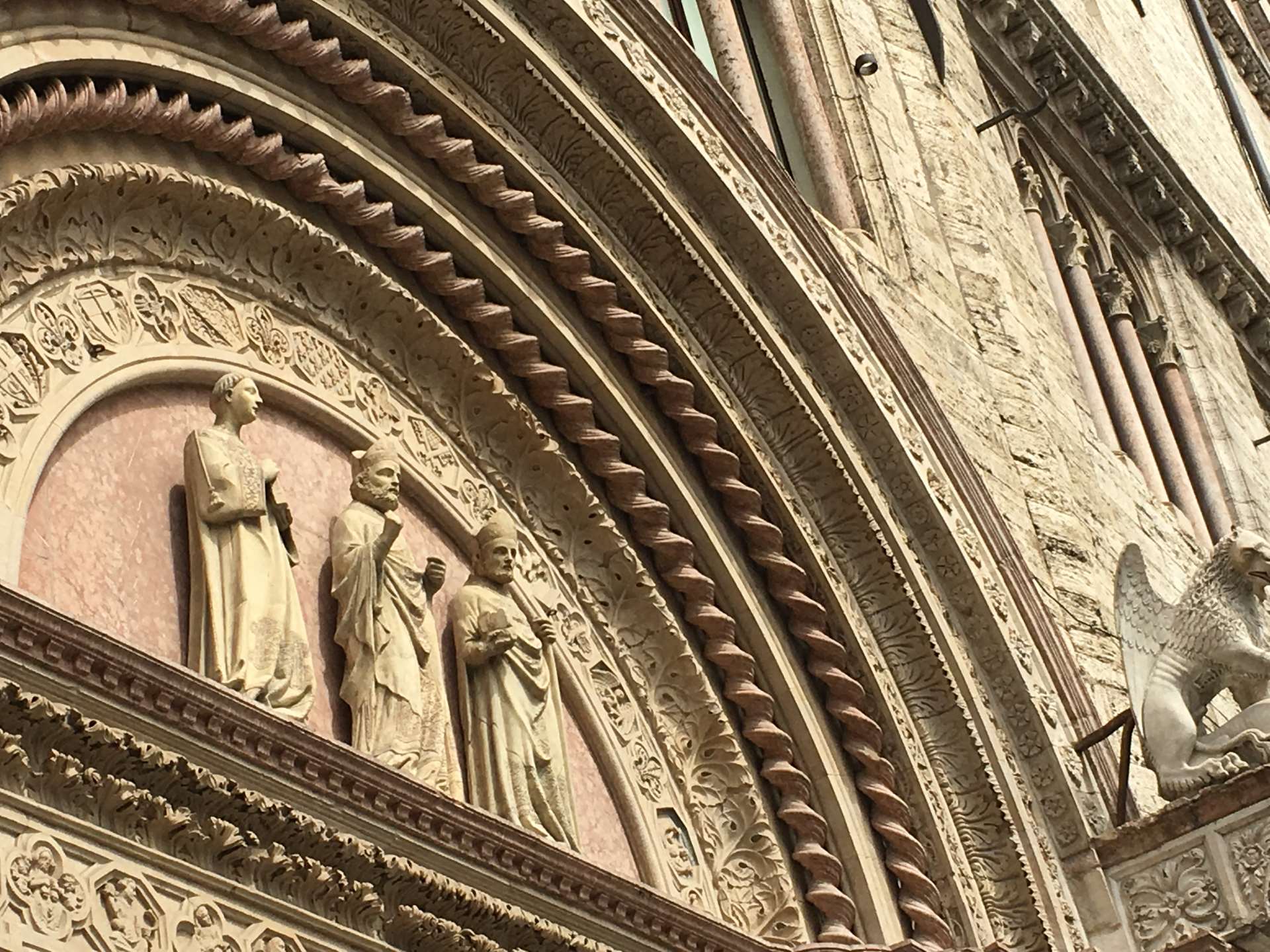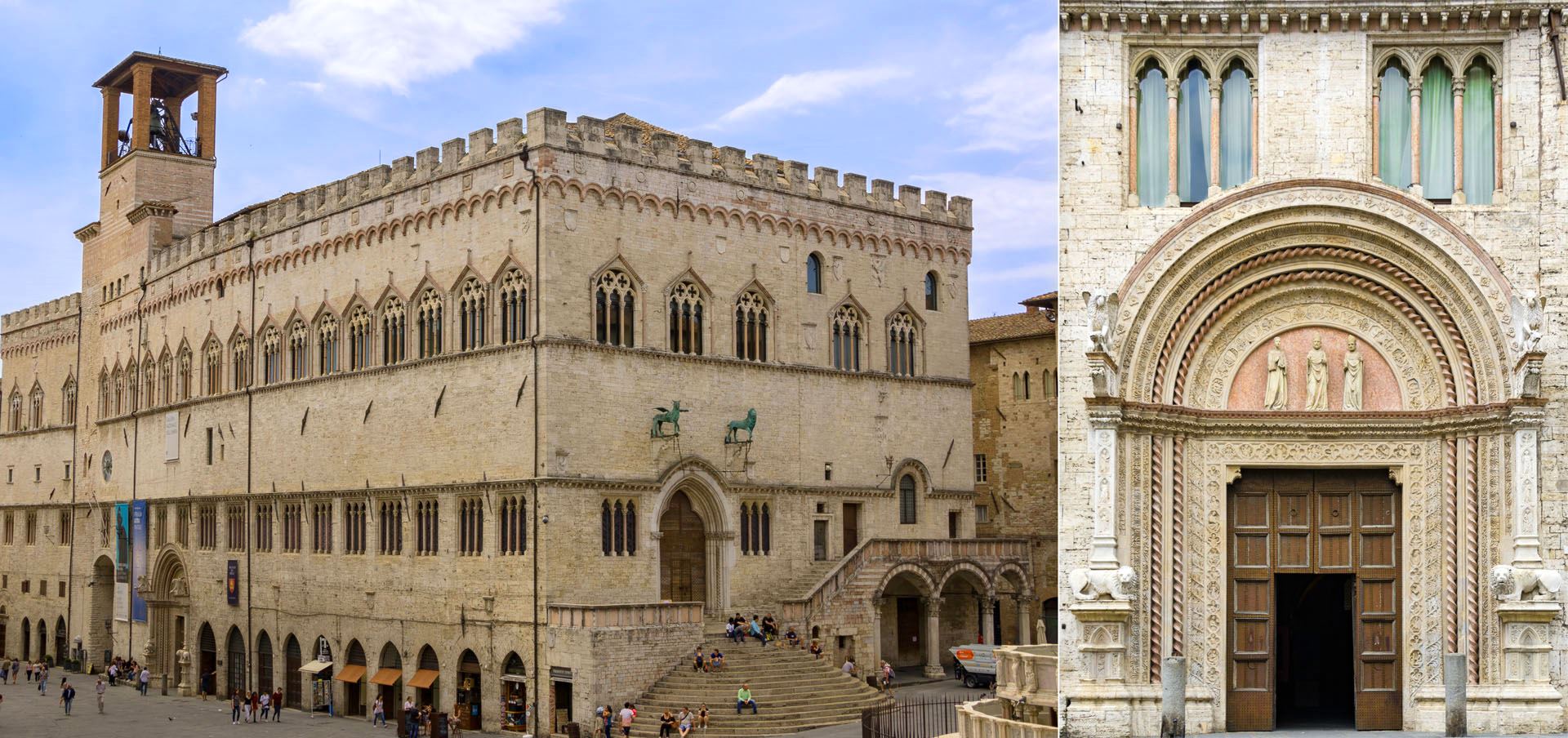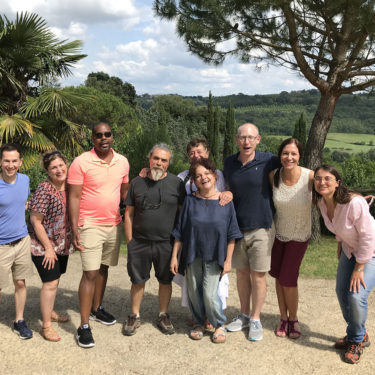In the showcase of architectural gems that grace the city of Perugia, Palazzo dei Priori, seat of the free commune (a.k.a. the municipal building) is arguably the crown jewel of the historic center. With its period-spanning ornamentation—overflowing with pomp and symbolism, this massive communal palace endows Perugia’s main square (Piazza IV Novembre) and its main avenue (Corso Vanucci) with a liberal dose of medieval majesty.
The Palazzo was first built in the late 1200s to house the governing body of priors (priori), which consisted of representatives from Perugia’s noble guilds. Two of these guilds, the Merchants’ Guild (Nobile Collegio della Mercanzia) and the Money Changers’ guild (Nobile Collegio del Cambio), held permanent seats at the table and their prestigious, historic chambers, with their elaborately wood-paneled halls, inlaid counters and frescoed ceilings remain open for visitors six days a week.
The Palazzo dei Priori’s irregular shape
As you might imagine, the construction of such an imposing edifice was not an instant gratification deal. Nor was it a suitable project for temperamental artists who didn’t like anyone messing with their genius. The Palazzo’s irregular shape, with its slightly wavy eastern side is due to periodic enlargements, motivated by an ever-shifting balance of power and carried out over hundreds of years by nearly a half dozen architects and countless artisans before finally culminating in 1902 with the completion of the semi-circular steps that now lead into the Sala dei Notari (Notaries Chamber). This large hall is also open to visitors and often hosts free events to be enjoyed while sitting on a 16th century bench beneath elaborately frescoed ceilings.
Travertine as the principal building material
Palazzo dei Priori is made all the more magnificent by its use of travertine as the principal building material. With its characteristic rough-hewn texture and linen white color this calcareous stone creates a beautiful contrast for the intricately sculpted details in ivory-veined pink and dove toned marbles. A blow-by-blow inventory of this building’s fine appearance is the stuff of many a guidebook but allow me to highlight a few of its spectacular features, one of which is a lofty bell tower, still chiming out the hours throughout each day.

24 Gothic windows and a medieval interpretation of the Etruscan phallus
Just below the crenelated parapet on a wall punctuated by the occasional coat of arms, is a corner-turning bank of 24 Gothic windows complete with classically styled mullions then topped with a medieval interpretation of the Etruscan phallus—a vertical detail with a sphere that is not a reference to the male body part but a decorative element that’s a nod to an ancient sun god. Below this bank are yet another twenty windows, with heavy leaded glass, reminiscent of wine bottle bottoms and separated of course by more intricately detailed mullions.
Two symbols of Perugia, the griffin and lion, sitting at the entry
There are two grand entranceways. The earliest is on the northern façade leading into the notaries’ chamber. Sitting proudly beneath bronze copies of the two symbols of Perugia, the griffin and lion, to its right are the remains of a triple-arched loggia that once belonged to the church of San Severo. Another entrance is a glorious, Romanesque affair whose myriad details cannot easily be captured in one measly blog post. Virtues and vices, saints and mythical beasts are all represented here. Naturally, they’re embellished with every manner of leafy scroll and other heraldic motifs.
Approaching this entrance from the southern end of the corso, past the lineup of ever-present elderly locals exchanging gossip on the palazzo’s well-worn stoop, two lions command your attention before your eyes wander up to a pair of ferocious griffins, each about to devour a helpless calf. This early form of “product placement” was paid for by the butchers’ guild.
You step across this threshold, under the watchful gaze of three patron saints and enter a vaulted atrium where the original bronze statues of the griffin and lion cast their shadows across the dimly lit stone. Substantial pillars support the rooms above whose chambers still hold memories of the countless power struggles, endless decrees and hundreds of years worth of civic disputes.

The Palazzo dei Priori houses the National Gallery of Umbria
Today the Palazzo houses the National Gallery of Umbria on its upper floors, where a robust collection of artworks from the 13th to the 19th century is displayed in 40 gallery rooms. Also stationed here are the mayor and other government officials, still toiling away all these centuries later at the equally refined art of Italian bureaucracy.













